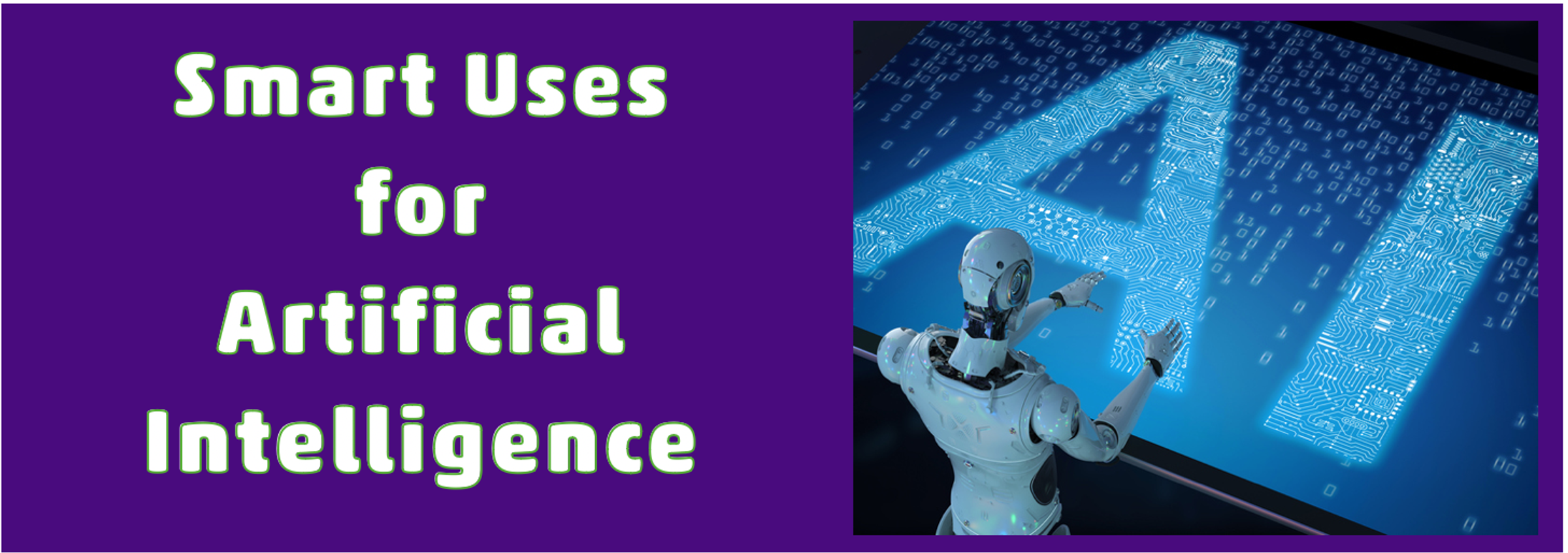Artificial Intelligence - AI :

Say’s Law of Robots - Why AI Won’t Steal All the Jobs:
Jim Pethokoukis spots the beginnings of a new wave of panic—that AI may not destroy us,
but it is going to take away our jobs.
This fear of “technological unemployment” is as old as the Luddites and persists to this
day. Yet the feared result has never really happened, and it’s worthwhile to understand why that is — and why this time will not be different.
‘Gilligan’s Island’ Economics
The key to grasping this is a little-understood principle of economics known as Say’s Law,
after the 19th-century French economist Jean-Baptiste Say. The law is sometimes stated
as “supply creates its own demand,” which may not seem plausible. After all, only the
king of the salesmen could sell refrigerators to Eskimos. But the actual point is that supply
and demand are really the same thing, just viewed from different perspectives. What one
person produces, his supply, is also what he has to trade for everything else, which is his
demand. As Say put it, “As each of us can only purchase the productions of others with
his own productions—as the value we can buy is equal to the value we can produce, the
more men can produce, the more they will purchase.”
To illustrate this, let’s start with one of those simplified thought experiments economists
like to use: Imagine two men washed ashore on a remote island. Let’s say that one
decides to specialize in hunting wild pigs while the other specializes in picking the
island’s wild-growing fruits and vegetables. What would the two men trade? The first man
would trade meat for vegetables, and the second man would trade vegetables for meat.
Each man’s supply, the amount he produces, is also the demand he has to offer for trade.
From another perspective, the hunter’s supply of meat is his demand for vegetables, and
the planter’s supply of vegetables is his demand for meat. What each man produces
(over and above what he consumes himself) is what he has to trade for the other man’s
product.
The critical point is that the more each man produces, the greater the benefit to the other
person. One man’s prosperity doesn’t take away from the other’s — nor, as Say
concluded, is one country’s prosperity earned at the expense of its neighbours. Instead,
each person’s prosperity adds to that of his neighbours.
How does this apply to automation? Well, suppose we have another island where two
men wash ashore. Let’s call one of them “the professor.” He’s a scientific genius and
prolific inventor who devotes his time to creating gadgets that do various bits of useful work and provide goods that would not normally be obtainable on an undeveloped island. Let’s call the second man Gilligan. Not being quite as bright as the professor but still industrious and eager to help, Gilligan does most of the manual labour: pedalling a bicycle to run a generator for electricity or gathering fruit from the island’s trees. In this two-man economy, whatever the professor’s machines produce constitutes his demand for Gilligan’s time and labour.
So what will happen to Gilligan as the professor builds more machines and makes them
better and more sophisticated? Will he be better off or worse off? Will the professor’s
inventions increase or decrease the demand for Gilligan’s labour? Well, remember that the
total amount produced by machines constitutes the demand for Gilligan’s labour — so as
the machines get better, that demand increases and does so sharply. The more the
professor is able to make and do with his gadgets, the more goods he will have to trade
for Gilligan’s work.
This is the application of Say’s Law to automation. Call it Say’s Law of Robots: The sum
total of goods produced by automation constitutes the demand for everything that is not
automated.
Ned Ludd Was Wrong
This analogy assumes, of course, that not everything can be automated. But not
everything is easy to automate; the more complex tasks will resist being reduced to
formulas, and everything can’t be automated all at once. The effort of automation goes
first to the areas where it is most profitable, either because it is the cheapest to implement
(for example, an online chatbot) or because it produces the highest value (for example,
self-driving cars—when we finally get them). And it always happens more slowly than we
expect.
Moreover, even if the professor and Gilligan could automate everything they need for
basic subsistence, they would want to go beyond subsistence to achieve greater abundance, live in comfort, and then in luxury. Or, you know, maybe they would want
to use some of that technology to get off the island. So there is always going to be
something more that they want to do, and Gilligan will never be out of a job.
None of this is speculation. The simplified thought experiment just helps us explain the
real-world results of 200 years of innovation and automation, beginning with the Industrial
Revolution. Over the past two centuries, there have been many changes in how people
work, and there’s no reason to think that will stop. But “technological unemployment” has
constantly been forecasted and has never actually happened. As mechanization and automation increase production, they increase the total demand for labour, and the average worker gets paid more. This is how, one after another, developing countries have risen from poverty to prosperity.
Cost Disease, but in a Good Way
It’s worth noting that industrialization and automation do not increase the wages only of
people directly involved in the industries that are automated first. Its benefits tend to
spread widely across the economy. The explanation for this beneficial phenomenon has a
deceptively unpleasant name: Baumol’s Cost Disease.
The purpose of William Baumol’s theory was to explain why increased productivity from
automation tends to raise the wages of workers whose production is not automated. A
summary in the Chicago Booth Review explains the reasoning:
The example Baumol and the late William G. Bowen made famous is that of the
string quartet. The number of musicians and the amount of time needed to play a
Beethoven string quartet for a live audience hasn’t changed in centuries, yet today’s
musicians make more than Beethoven-era wages. They argued that because the
quartet needs its four musicians as much as a semiconductor company needs
assembly workers, the group must raise wages to keep talent—to keep its cellist
from chucking a career in music and going into a better-paying job instead.
To be sure, many of us are willing to take jobs as musicians or writers at a
discount in pay because we enjoy the work and don’t want to toil on an assembly line—or,
worse, become lawyers. But the pay gap can’t get too large.
More fundamentally, if we bear in mind Say’s Law of Robots, we will remember that the
pay for these non-automated jobs increases precisely because so many new goods are
being produced by everybody else. The supply of goods produced by automation is the
demand for everything not produced by automation.
Get Human
This is not to say that every specific job that exists now will continue to exist. Some will be
automated away, and people will have to seek out new work that requires a human. But
history shows that the number of jobs that disappear altogether is very small. Usually,
people do the same job but in a different way, using the new technology. There may not
be many typesetters left in the old-fashioned sense of people who physically put together
printing plates with moveable type—a rare novelty skill today. But there are an awful lot of
people doing the same thing on a computer. It’s still called typesetting, but the workers
who do it today usually call themselves “graphic designers.”
AI chatbots, for example, will undoubtedly replace some very routine kinds of writing and
have already begun to do so. Or, to be more exact, they will shift that writing work
to people whose job is to feed prompts to the chatbot and check its results.
If we want to warn people about the effect of technological change on their jobs, we
should at least warn them about the right things. We should advise them to look for how
AI can enhance their work rather than replace it, and we should challenge them to focus
on the creative and conceptual-level thinking that machines can’t imitate.
But the historical evidence from past technological change is on the side of Say’s Law of
Robots. The supply created by machines is the demand for everything not created by
machines. Once again, we should expect not to be put out of work but to get richer. It is
only the doomers who will have to look for new jobs—though I expect that they, too, will
find a way to adapt, seeking out all the downsides in the next new technological leap to
come along.
